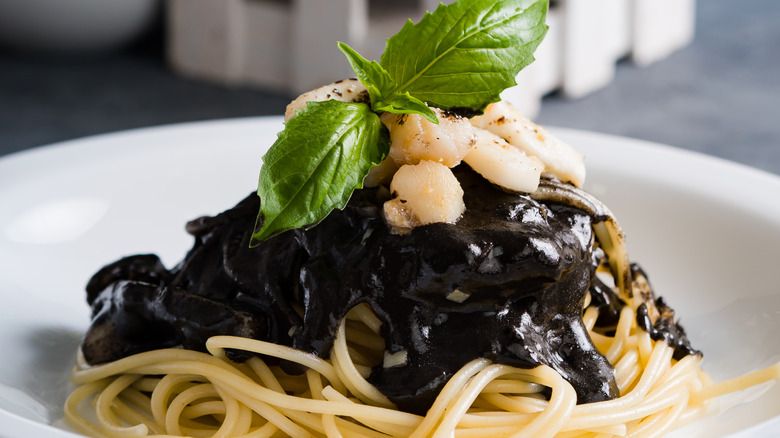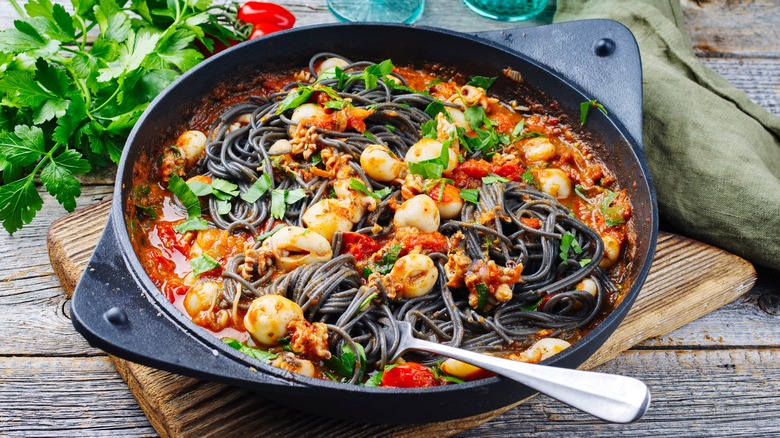The Best Time To Add Squid Ink To Spaghetti Sauce
If you haven't cooked with squid ink before, you might be confused about how and when to use it in your pasta dishes. A natural dye that's made and stored in the ink sacs of squid and other cephalopods (they release it when attacked by predators to create a smokescreen for their getaway), this black pigment has a fishy aroma, arresting color, and metallic flavor. Available sterilized and jarred, store-bought squid ink should be used sparingly (1g of ink to every 100g of ingredients in your recipe) and stirred through your pasta sauce once it's cooked to help the ink to retain its ocean-like salinity and meaty flavor.
Much like the way fish sauce is added to Thai dishes at the last moment so its pungency isn't tempered by the furious heat of the wok, adding squid ink to your bubbling pan of sauce at the very end of its cook time allows the sea-like aroma of the ink to shine. While squid ink doesn't share the same intense smell as fish sauce — it's far more subdued because it's used in its natural unfermented state — it does have a savory flavor that instantly lends depth to a variety of seafood dishes and regional rice-based delicacies, like Catalonian arròs negre.
Squid ink has high levels of melanin
Squid ink is full of a natural pigment called melanin, which lends it that characteristic black color that's often employed in risottos and pasta dishes, like spaghetti al nero di seppia, to give them a dramatic appearance. However, adding this natural food dye to spaghetti sauce also boosts its umami flavors, because the ink has an unusual earthy but briny taste, courtesy of its high levels of glutamate.
If you're feeling adventurous you can buy fresh squid that come with their ink sacs intact instead of using a store-bought jar. Simply give the squid a gentle clean, taking care not to accidentally burst the sac, and use the ink as desired (covering your cutting board in plastic film will prevent it absorbing any ink spillages). Be mindful that even a small amount dotted into your pasta sauce will imbue it with a delicious meaty taste, turning it into a striking jus that will coat your noodles with a slick of savory, satisfying flavor. Once you feel comfortable with using squid ink, you can try adding some to fresh pasta dough to create black squid ink tagliatelle, spaghetti, or ravioli. Pasta recipes that use squid ink, such as this witch hat pasta, are perfect for adding some fun drama to Halloween celebrations, too. Finally, it's worth noting that some varieties of squid ink are actually derived from cuttlefish, which has a milder taste that's not as metallic as true squid ink.

